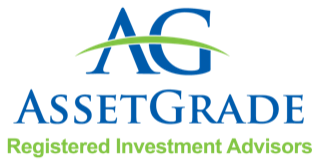Why Do I Need A Financial Plan?
There are three reasons why you need a good financial plan put together by a fiduciary. A good financial plan:
- Helps you to think about your goals - It’s a healthy exercise to take a step back and think about what is important to you.
- Gets your finances in order - A good plan helps you clean up and consolidate your old accounts (401Ks, IRAs, brokerage accounts, etc.). It also helps to reduce taxes by putting investments in the right type of account. Essentially, a good financial plan aligns your finances with your goals.
- Reduces Stress - If your finances are not in good shape, it feels good to address them and figure out how to get on track. If your finances are in great shape, it is satisfying to hear the confirmation by a professional. If you fall in between, a good plan helps address the uncertainty and identify what you need to do to get on track
How Do I Get Started?
Retirement Planning
How can you take advantage of all the complex resources out there to build an ironclad retirement plan? We’ve got you covered.
Types of Plans
401(k)s - A 401k is a qualified retirement plan that allows eligible employees of a company to save and invest for their own retirement on a tax deferred basis. Only an employer is allowed to sponsor a 401k for their employees. ... These contributions are deducted from your salary on a pre-tax basis.
Roth IRAs - A Roth IRA is a tax-advantaged, retirement savings account that allows you to withdraw your savings tax-free. Established in 1997, it was named after William Roth, a former Delaware Senator. Roth IRAs are similar to traditional IRAs with biggest distinction between the two being how they're taxed. Contributions are not pre-tax but distributions are tax-free.
SEPs – A simplified employee pension (SEP, or SEP IRA) is a retirement plan that an employer or self-employed individuals can establish. The employer is allowed a tax deduction for contributions made to the SEP plan and makes contributions to each eligible employee's SEP IRA on a discretionary basis.
Cash Balance Plans
A cash-balance plan is a defined benefit plan with a twist; benefits are stated as a 401(k)-style account balance, rather than a monthly income stream. Like a pension plan, though, they have substantially higher contribution limits. Not only are contribution limits higher, they also increase with age. If you are able and interested in saving more than allowed with a 401(k)/SEP only, a cash balance plan may be right for you. Whether you’re running a one-person operation or have a handful of employees, if you’re a business owner or partner consistently making more than $300,000 a year, you may be an ideal candidate for a cash-balance plan.
Action Steps
- Pay off student loan debt and take advantage of your employer match – don’t leave free money on the table.
- Spend less by saving first - Create a budget and make saving a priority each month. Utilize automated savings plans that put money aside before depositing the rest of your earnings. Make room in your budge for having fun, but make sure it fits within your budget. Maybe you’ll still enjoy your café mocha but just on the weekend instead of everyday. Making that small change can amount to $100 a month in savings!
- Aim to save 15% of your pre-tax income per year – if you are unable to do this right away, just make small cuts to your everyday spending and start saving beyond your 401K.
- Utilize tax-efficient savings and withdrawal strategies - Investing in a variety of accounts that have different tax characteristics is optimal. These can include traditional IRAs or 401(k)s, Roth IRAs and taxable brokerage accounts. Diversifying now while saving, you provide yourself with more flexibility.
- Automate your contributions – if you don’t see it then you can’t spend it. Set up automated contributions from your paycheck to your retirement accounts. It is really important to set up a similar type of automated saving to go into your taxable brokerage account – this gets you saving beyond your 401K.
How AssetGrade Can Help
Check our FREE AssetGrade Checklist

